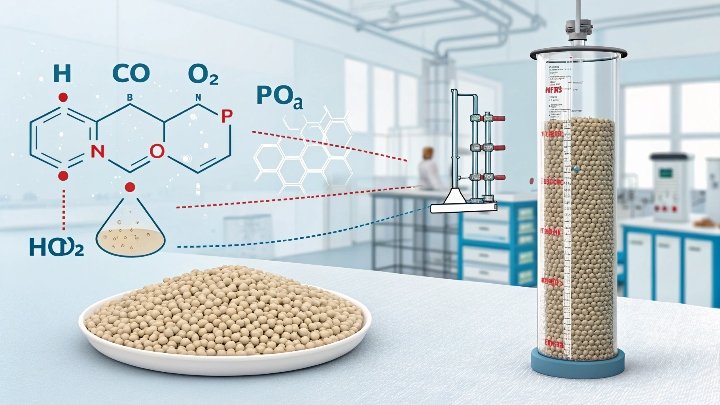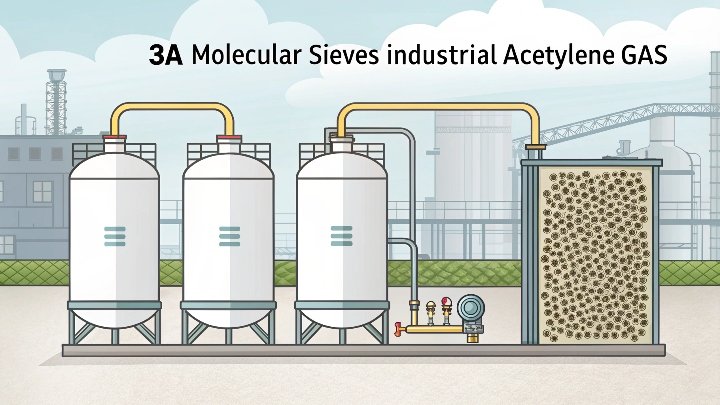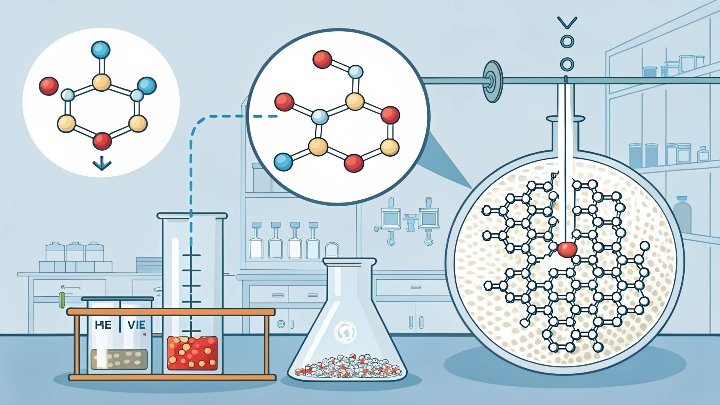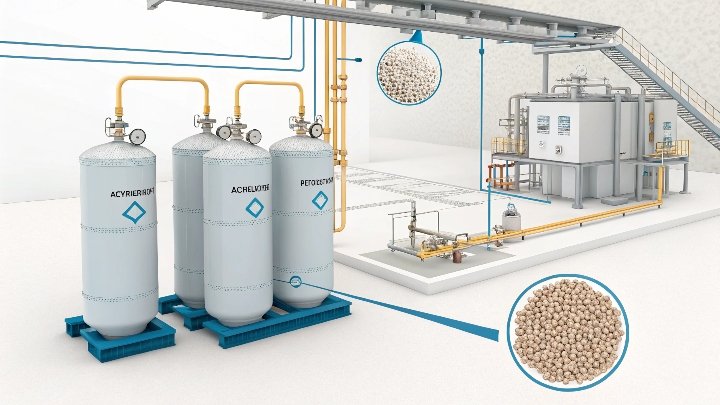I see many facilities struggle with acetylene instability, and the stakes can be high. I felt the same pressure to find a reliable drying solution.
The superstar is 3A molecular sieve. It removes moisture and helps stabilize acetylene. This sieve has a strong attraction for water and keeps acetylene from becoming dangerous. It is a game-changer.
I know safety is always a priority. Acetylene can be unpredictable when exposed to moisture. I will show you why drying acetylene matters, why 3A molecular sieve stands out, and how it helps. Stick around, and you will see the bigger picture.
Why Drying Acetylene Gas is a Big Deal?
Many years ago, I handled my first project with acetylene. The slightest trace of water worried me. I realized how important dryness was to keep acetylene stable.
Drying acetylene is critical because moisture triggers unwanted reactions. Wet acetylene can become unstable and can lead to spontaneous explosions, placing operations and safety in danger.
Importance of Drying Acetylene
I want to break this down in a way that makes sense. Acetylene is a flammable gas that plays a big role in welding, cutting, and chemical processes. It is known for its unstable nature. Moisture can trigger side reactions in acetylene. That can affect performance and lead to unsafe conditions. I have seen operations come to a halt because of small pockets of moisture in the gas stream.
I remember a time when a client approached me with a system that suddenly shut down. The culprit was water inside the acetylene supply lines. The water made the acetylene more prone to decomposition. The client faced unplanned downtime and potential safety threats. We had to scramble to install a drying system. That situation showed me that dryness is a necessity, not an option.
When I talk about drying, I mean removing water vapor to very low ppm levels. This ensures acetylene stays more stable. By lowering the risk of decomposition, I can help reduce the chance of explosions or dangerous reactions. Below is a simple table that compares “Dry Acetylene” and “Wet Acetylene”:
| Aspect | Dry Acetylene | Wet Acetylene |
|---|---|---|
| Stability | Higher stability, lower chance of decomposition | Lower stability, higher risk of side reactions |
| Safety | Safer, reduced explosion risk | Riskier, possibility of spontaneous ignition |
| Equipment Life | Longer life, fewer corrosion problems | Corrosion and damage from moisture |
| Productivity | Steady operation, fewer shutdowns | Unplanned downtime, unpredictable output |
These points highlight why dryness in acetylene processing is a big deal. A single oversight can halt production or cause safety issues. I have learned that consistent drying is the best way to keep things running smoothly. When I share this knowledge, I always emphasize the link between dryness and reduced hazard. It is a direct connection. I encourage everyone to pay attention to the dryness level of acetylene, whether in small-scale labs or large industrial plants. The reward is a safer and more efficient process.
Meet the Superstar: 3A Molecular Sieve?
I once thought many materials could dry acetylene. Then I tested 3A molecular sieve. I found it has a special pore size that targets water molecules.
3A molecular sieve offers a selective adsorption for water. It fits the exact size of H2O molecules. It stops acetylene from reacting with moisture and keeps it stable.
3A Molecular Sieve Advantages
3A molecular sieve has a pore size of around 3 angstroms, which is small enough to adsorb water but not bigger hydrocarbons. That is beneficial in processes involving acetylene. I have observed how it selectively attracts water molecules in a stream of gas. This property is vital, because we only want to remove water and keep the valuable acetylene intact.
Here is why 3A molecular sieve is so effective for acetylene drying:
-
Selective Adsorption: Its pores match the diameter of water molecules. Acetylene cannot enter those pores, so it remains largely unaffected. This selectivity is key to preventing product loss and avoiding undesirable side reactions.
-
High Affinity for Water: 3A molecular sieve exhibits a strong pull for water molecules. Once moisture is present, the sieve grabs it before it can cause trouble in the acetylene line.
-
Thermal Stability: Acetylene can be sensitive to temperature changes. 3A molecular sieve can withstand moderate temperature swings during drying without losing effectiveness. I have heated and cooled these sieves multiple times, and their adsorption capacity remains consistent.
-
Regenerable: 3A sieve can be regenerated using heat or purge gas. This saves on replacement costs and reduces waste. With proper handling, it can last for many cycles.
-
Safe Operation: Many processes dealing with acetylene must prevent contamination or friction points. 3A sieve is designed for controlled operations, so it is less likely to break down and add particulates to the system.
Below is a table that captures some of 3A molecular sieve’s attributes and why they matter:
| Attribute | Why It Matters |
|---|---|
| Pore Size (3Å) | Limits adsorption to water molecules |
| High Adsorption Capacity | Prevents moisture-induced instability |
| Regenerability | Extends service life, lowers cost |
| Low Dust Formation | Reduces potential for system blockages |
| Wide Operating Range | Handles varying temperature and flow rates |
Each point shows why I trust 3A molecular sieve with acetylene. When I started using it, I saw a direct reduction in unplanned stops. Processes ran smoother. The product was safer to handle. In my experience, once you have the correct drying system with 3A molecular sieve, you can maintain dryness in acetylene with confidence. That leads to a safer and more productive environment.
How 3A Molecular Sieve Saves the Day?
I am careful with every step when working with acetylene. The presence of 3A molecular sieve in the drying tower has eased my worries many times.
3A molecular sieve traps moisture through physical adsorption. It stops water from disturbing acetylene. This process lowers the instability of the gas and helps reduce spontaneous risk.
Drying Process with 3A Molecular Sieve
Let me explain how the process usually goes. When I set up a drying tower, I fill it with 3A molecular sieve granules or pellets. The acetylene stream flows into the tower, where it contacts the sieve. Water molecules present in the gas get trapped inside the tiny pores. This prevents water from continuing downstream. The dryness level after the tower is usually good enough for safe operations and storage.
I like to check the process parameters carefully. Flow rate, temperature, and pressure affect how effectively the sieve captures moisture. For example, if the flow is too high, the contact time might be too short, leading to insufficient drying. If the temperature is too high, it may reduce the sieve’s adsorption capacity. However, 3A molecular sieve generally operates well across common industrial conditions.
I also consider how to regenerate or replace the sieve. Over time, the sieve pores fill up with water. I typically regenerate the sieve by heating it or by using a dry purge gas. That drives out the trapped moisture and readies the sieve for another cycle. In a continuous operation, I might use two towers. One tower dries while the other regenerates. That ensures no downtime. This approach works especially well in larger plants where constant acetylene supply is critical.
When I first implemented this system, I noticed immediate benefits:
- Improved Safety: No moisture means much less risk of unexpected decomposition or corrosion in the lines.
- Longer Equipment Lifespan: Dry gas leads to fewer corrosion issues and less wear.
- Better Product Quality: Consistent dryness results in cleaner end products, especially if acetylene is used for further chemical reactions.
I sometimes get asked if 3A molecular sieve is the only choice. In my view, it is the best choice when dealing with acetylene. It allows water to be adsorbed without capturing bigger molecules. Other sieves with larger pore sizes may trap more than just water. That can cause problems or reduce yield. Meanwhile, something smaller than 3A might not adsorb water effectively. So 3A hits the sweet spot for acetylene drying.
To summarize, the 3A molecular sieve has rescued me from many potential safety and process issues. It consistently delivers dryness levels that keep acetylene stable. When I see an acetylene drying setup with 3A sieve, I know the operation is on the right track. It is one of the simplest and most effective ways to maintain the dryness needed for a safe and stable acetylene environment.
Conclusion
Drying acetylene with 3A molecular sieve is my proven method to keep it safe and reliable.






